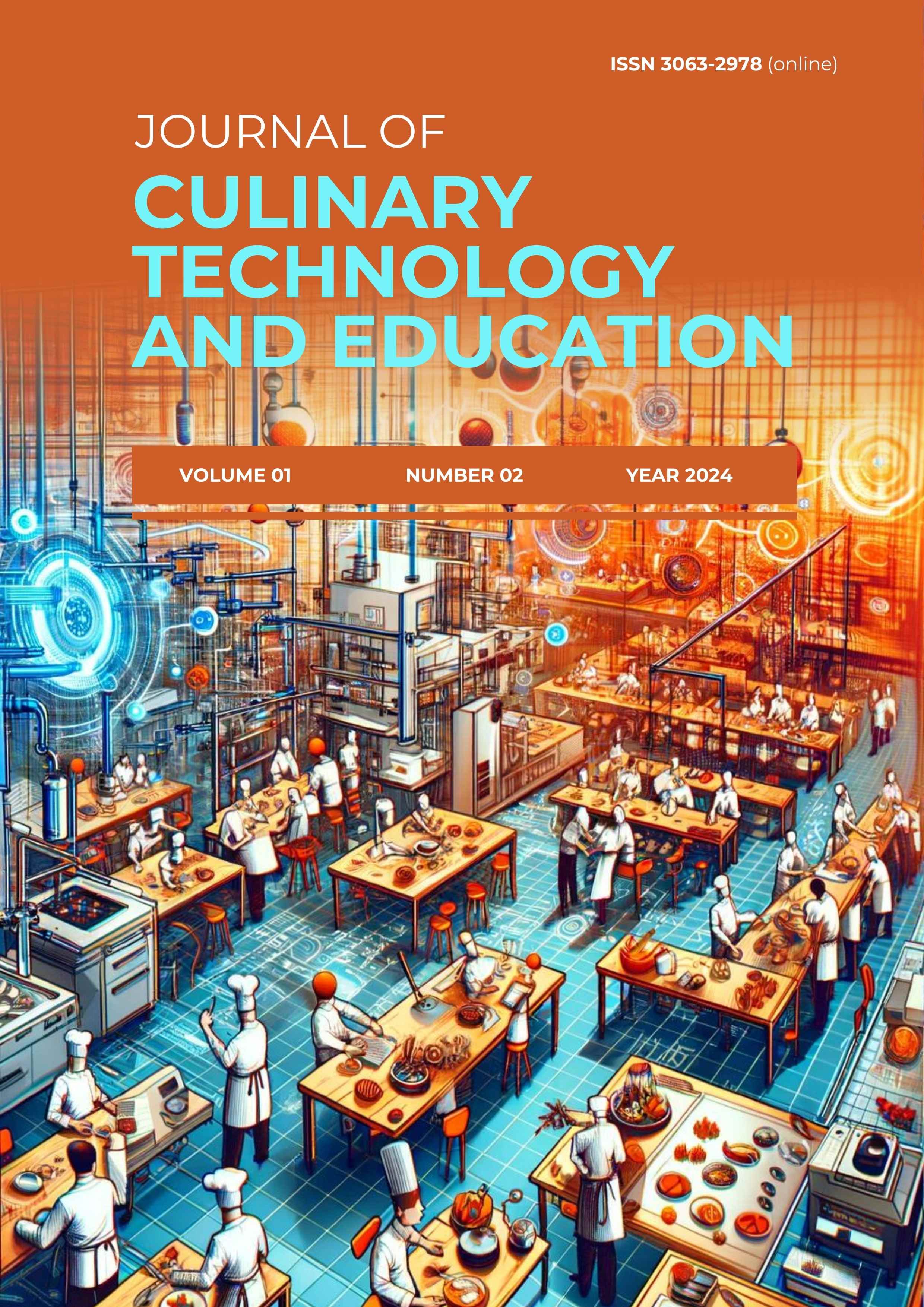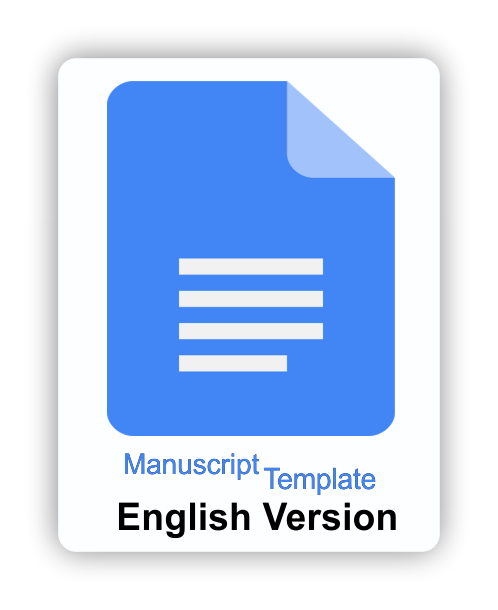Exploring students' knowledge and interest in food styling and photography within culinary arts programs at vocational colleges
DOI:
https://doi.org/10.21831/jcte.v1i2.716Keywords:
Culinary arts, food styling and photography, vocational educationAbstract
This study examines the knowledge and interest of Diploma Vocational Malaysia semester 4 Culinary Arts students in food styling and photography to support educators in refining teaching strategies and curriculum design. Conducted among 434 students across Peninsular Malaysia, a sample size of 205 was determined using the Krejcie and Morgan table. Data were gathered through a structured questionnaire assessing students’ opinions, knowledge, skills, and attitudes. Using the ASSURE model, which integrates media and technology into learning, the study focused on effective instructional design through learner analysis, objective setting, and evaluation. Analysis via SPSS version 27 revealed a high level of subject implementation, with a mean score of 3.9155 and a standard deviation of 0.34094, indicating students’ recognition of the subject's importance for future careers. The findings highlight that mastering food styling and photography can enhance students’ employability, providing an advantage in the food and beverage as well as creative industries. These skills address job market challenges, boosting the marketability of vocational graduates. The study also suggests its applicability to public universities and private institutions, offering a basis for broader evaluations of student interest and knowledge. Expanding this research could further improve curriculum design and graduate employability across educational sectors.
Downloads
References
Abdullah, N. S. S., Majid, M. Z. A., & Hussin, M. (2022). Systematic literature review of higher education and unemployment in Asian countries. International Journal of Academic Research in Economics and Management Sciences, 11(1).
Bennett, D., Garrett, T., & Holloway, A. (2020). The rise of digital literacy in the modern job market: Emphasizing creativity and digital proficiency. Journal of Career Development, 47(2), 143-159.
Çanakçı, S. D., & Turan, B. (2021). A situation analysis on graduate gastronomy and culinary arts education in Turkey. Journal of Tourism and Gastronomy Studies, 9(4), 2462-2477. https://doi.org/10.21325/jotags.2021.902
Dornenburg, A. (1996). Culinary Artistry. John Wiley & Sons, Inc.
Elangovan, N., & Sundaravel, E. (2021). Method of preparing a document for survey instrument validation by experts. MethodsX, 8, 101326.
Godoy Pena, M., Liu, R., & Thompson, A. (2023). Enhancing student engagement through technology and experiential learning: A modern approach to education. Journal of Educational Innovation, 18(2), 123-135. https://doi.org/10.xxxx/jei.2023.182123
Habidin, N. F., Ong, S. Y. Y., Fuzi, N. M., Muhamad, U. A., & Tuan Chik, T. W. (n.d.). Interdisciplinary research in education, technology and social science.
Heinich, R., Molenda, M., Russell, J. D., & Smaldino, S. E. (1999). Instructional Media and Technologies for Learning (6th ed.). Merrill/Prentice Hall.
Inayat, S., & Ali, M. (2020). Influence of teaching style on students. Journal of Education Research, 7(1), 93-94.
Ismail, E. B., & Ahmad, A. (2022). Kesediaan murid mengaplikasikan penggunaan Web 2.0 dalam mata pelajaran sejarah di sekolah menengah. Malaysian Journal of Social Sciences and Humanities (MJSSH, 7(2), e001285-e001285.
Izah, S. C., Sylva, L., & Hait, M. (2023). Cronbach's Alpha: A cornerstone in ensuring reliability and validity in environmental health assessment. ES Energy & Environment, 23, 1057.
Kim, D., & Downey, S. (2016). Examining the use of the ASSURE model by K–12 teachers. Computers in the Schools, 33(3), 153-168.
Kim, J., & Lee, H. (2021). Digital tools and content creation in the food industry: A guide for enhancing employability through creative skills. Food Marketing Journal, 12(1), 22-35.
Mason, J., Classen, S., Wersal, J., & Sisiopiku, V. P. (2020). Establishing face and content validity of a survey to assess users’ perceptions of automated vehicles. Transportation Research Record, 2674(9), 538-547.
MasterClass. (2021). 5 food photography tips: How to create perfectly styled food photos. MasterClass. https://www.masterclass.com/articles/food-photography-tips-for-beginners
Pachava, V., Godoy Pena, M. T., Golla, S. K., & Raje, M. S. (2024). Investigating factors influencing students’ engagement in sustainable online education. Sustainability, 16(2), 689. https://doi.org/10.3390/su16020689
Polit, D. F., Beck, C. T., & Owen, S. V. (2007). Is the CVI an acceptable indicator of content validity? Appraisal and recommendations. Research in Nursing & Health, 30(4), 459-467.
Rahman, M. M., Tabash, M. I., Salamzadeh, A., Abduli, S., & Rahaman, M. S. (2022). Sampling techniques (probability) for quantitative social science researchers: A conceptual guideline with examples. Seeu Review, 17(1), 42-51.
Rosli, R., Mokhsein, S. E., & Suppian, Z. (2023). Content validity of teachers’ efficacy instruments toward implementing of classroom assessment in primary schools using content validity ratio (CVR). Journal of Contemporary Social Science and Education Studies (JOCSSES), 3(2), 22-31.
Simons, P. R.-J., & Goh, T. S. (2023). Technology-enhanced learning strategies for student engagement: Blending flexibility with experiential design. Educational Technology Research and Development, 71(3), 457–474.
Sürücü, L., & Maslakci, A. (2020). Validity and reliability in quantitative research. Business & Management Studies: An International Journal, 8(3), 2694-2726.
Uddin, M. Z. (2023). Phenomenology of depression and revision of depression scale in Bangladesh (Doctoral dissertation, University of Dhaka).
Varzakas, T., & Antoniadou, M. (2024). A holistic approach for ethics and sustainability in the food chain: The gateway to oral and systemic health. Foods, 13(8), 1224.
Zulkifeli, M. F., Ishar, M. I. M., & Hamid, M. Z. A. (2022). Elemen kemahiran insaniah pelajar pendidikan TVET semasa menjalani latihan praktikal. Malaysian Journal of Social Sciences and Humanities (MJSSH), 7(8), e001659-e001659.
Downloads
Published
How to Cite
Issue
Section
Citation Check
License
Copyright (c) 2024 Aina Afifah Azali, Zahidah Ab-Latif, Elia Md Zain

This work is licensed under a Creative Commons Attribution-ShareAlike 4.0 International License.







